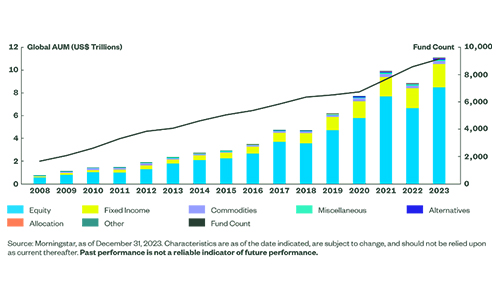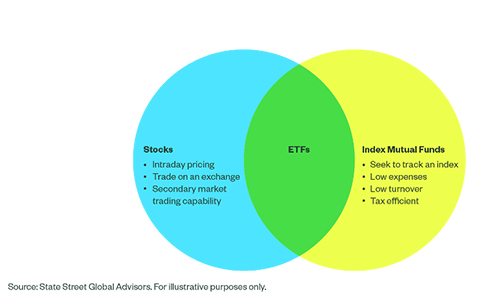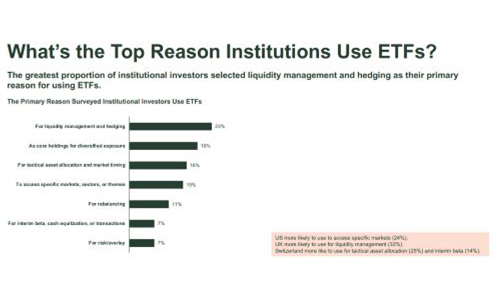Swiss institutional investors are increasingly adopting ETFs, with nearly two-thirds now incorporating them into their portfolios regularly. What factors are fueling this growing interest, and in what ways are they utilizing ETFs differently?
State Street Global Advisors launched the original ETF innovation in 1993 in the aftermath of the 1987 «Black Monday» market crash. In the decades since, the ETF industry has endured periods of market strength and stress. But through it all, ETFs have demonstrated their value and resilience, and demand for them has grown almost exponentially.
As ETFs’ popularity has mushroomed, so has the number of product offerings — stretching across geographies, demographics, investment strategies, asset classes, and everything in between. With a cumulative annualized growth rate (CAGR) of 19.8 percent since 2008, ETFs reached $11.1 trillion assets under management (AUM) as of December 31, 2023.1 And the number of ETF offerings globally has risen to 9,149 funds (see graphic below).
The Impressive Growth of the ETF, 2008 to 2023
Institutions are attracted by the best-of-both-worlds nature of ETFs because they offer the diversification benefits of mutual funds but unlike mutual funds, they can be bought and sold in a single trade on an exchange throughout the day — just like stocks (see graphic below).
Institutional Building Blocks
Today, ETFs have become key building blocks when making asset allocation decisions. They allow investors to focus on a wide range of portfolio outcomes with greater efficiency. And the surging popularity of ETFs has given rise to remarkable liquidity — making them powerful trading tools, especially amid periods of market volatility, a critical priority for institutions.
As the latest State Street Global Advisors ETF Impact Survey sets out, institutions around the world are using ETFs more than ever before, attracted by their convenience, diversification, intraday trading, and low cost.
Their liquidity is vital for institutional investors, who need to manage or move large volumes of assets efficiently. Institutional investors around the world who identified as heavy ETF users overwhelmingly (91Prozent) reported that liquidity was a key factor in the decision.
Switzerland’s ETF Journey
ETFs are nothing without satisfied investors. Among institutional investor respondents, regardless of country or region, a significant number report being heavy users of ETFs.
Swiss institutions are not standing on the sidelines. As the chart above illustrates, over two-thirds of Swiss investors (67 percent) told us that they were using ETFs either extensively, or frequently. Only one in 25 (4 percent) said they were rarely or never using ETFs.
However, we found a few intriguing differences between the approach of Swiss investors and the rest of the world. Globally, institutions said the two main reasons they would use ETFs were for liquidity management and hedging; and as core holdings for diversified exposures. But Swiss institutions’ primary reasons for using ETFs were as a tool for tactical allocation – mentioned by 25 percent, and to deliver interim beta (14 Prozent).
And the 51 Swiss investors we surveyed – all with a minimum AUM of $1 billion – had different concerns too. Swiss respondents had greater concerns about managing ESG issues than any other country. ETFs have continued to sweep the investment world, with growing AUM, rising interest in Active ETFs, and an exponentially broadening range of asset class tools. And Swiss institutions are not missing out.
Get your report copy now
All figures taken from State Street Global Advisors, 2024 ETF Impact Survey, April 2024 unless stated otherwise.
1 Source: Morningstar, as of December 31, 2023.














